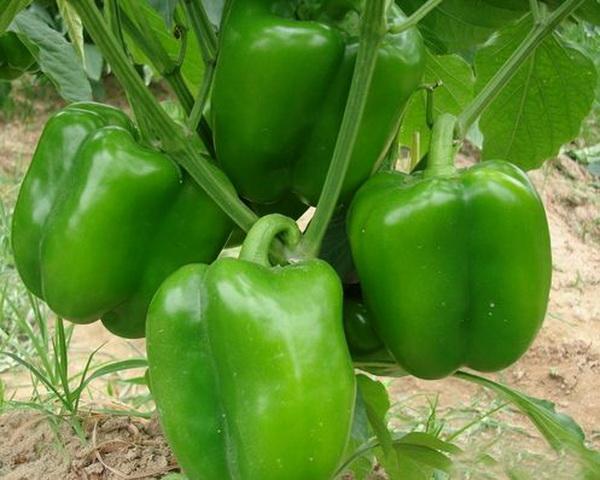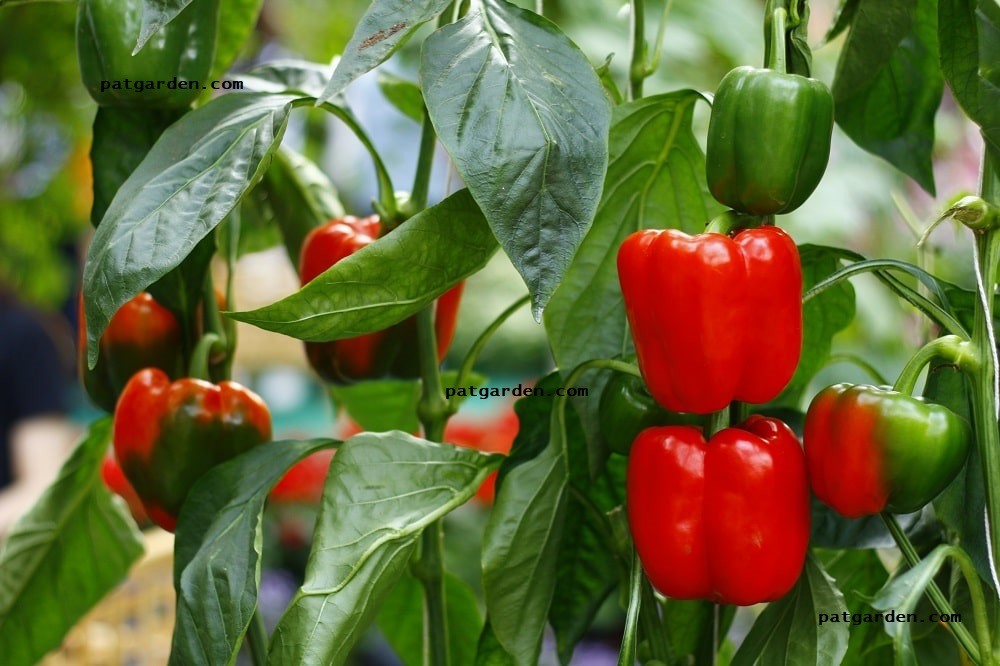I have been into green pepper gardening for over ten years. The journey was fun and exciting until I started noticing my green peppers turning black or dark purple. It was through costly trials and errors that helped me figure out the reason behind black bell peppers.
So, why are my green peppers turning black? Green peppers turning black occur due to natural aging, direct sunlight, cold temperatures, pests, and diseases. But there are green pepper varieties susceptible to getting this dark purple or black discoloration.
Continue reading this guide to learn the reasons behind bell peppers turning black. The peppers turning black information will help you figure out ways of fixing the issue. Besides that, you will know more about pepper varieties vulnerable to getting black or dark purple colors.

Why Are My Peppers Turning Black? (Causes & Solutions)
There are many reasons behind the green peppers turning black. Some of the causes of bell peppers turning black are inevitable. But black spots on green peppers are preventable.
If you are experiencing green peppers turning black, there is no need to freak out. The information in this article highlights the causes and solutions for black spots on bell peppers.
Below are the possible causes of green peppers turning black or dark purple. Take the time to read through it and learn how to fix each cause.
Natural Aging Process
Aging among plants and animals is inevitable. Each plant species display unique aging traits that help it stand out from other species.
Most green peppers turn black or dark purple due to the ripening process. There is no need to freak since this is normal in some green pepper species.
Direct Sunlight Exposure
Green peppers thrive in bright indirect sunlight. The natural light allows the bell pepper plant to undertake its physiological activities without facing challenges.
Direct sunlight exposure will make your green peppers turn black or dark purple discoloration. It is a natural defense mechanism against UV radiations.
Sunscald on bell pepper plants is the worst symptom. The bleached dry spots might increase the risk of pepper plant death. Relocate the current position of your bell peppers to a shade.
Cold Temperatures
Most pepper varieties love a temperature range of 65-80oF (18-27oC). The temperature enhances flowering, pollination, and fruit set development.
Jalapeno green peppers experience dark purple discoloration under cold temperatures. Any temperature below 46oF (8oC) might damage the pepper fruits.
Use a digital garden thermometer to help in detecting temperature changes. I recommend growing green pepper in the greenhouse during winter since they are more vulnerable to frosts.
Black Bell Pepper Varieties
Green bell peppers come in different varieties. Some green peppers maintain their coloration at maturity, and others turn black or dark purple.
Black bell pepper varieties are jalapenos and black peppercorn. These green peppers turning black at maturity are normal. There is no need to raise concern since these are genetic traits.
Green Pepper Diseases
Green peppers are vulnerable to diseases under poor growing conditions. Some infections make the pepper plant stem turn black.
Do not eat black spots inside bell peppers without determining the cause. Besides that, black spots on peppers are unsafe for consumption. But you can eat black bell peppers.
Here are the potential green pepper diseases to consider:
- Fungal Problems
Ripening pepper fruits do experience several fungal disorders. Anthracnose is a prevalent fungal disorder that commonly causes the formation of black rings pepper fruit.
Phytophthora blight is yet another fungal disease that causes black spots on pepper fruits, stems and even result in wilting of the entire plant.
Dealing with these black cankers on pepper plants is a daunting experience among new gardeners. The best thing is to inspect the plant and remove it to prevent the spread of fungal disorders.
- Blossom End-Rot
The crop problem is marked by black spots on pepper plant stems, sunken and rotted fruits. The condition tends to occur when the soil lack calcium.
Besides that, the problem can occur when the pepper plant is unable to absorb calcium minerals from the soil. You will notice pepper leaves turning black during the various growth stages.
- Viral Infection
It is an infection caused by the tomato spotted wilt virus. The condition results in the formation of light-colored rings on the pepper fruits, which later turn black.
The affected pepper may also experience black spots on leaves and wilting. When the condition is severe, then the infected plant will automatically die.
- Bacterial Infection
The most widespread infection occurs as a result of intercropping. The disease typically triggers the formation of black cankers on pepper plants.
However, it can easily be confused with the bacterial spot. The disease tends to occur when there are high temperatures and high humidity.
Pests Infestation
Some of the widespread pests that infest pepper plants are whiteflies, aphids, and thrips. These pests make the pepper plant leaves to curl and develops black spots.
The black spots are believed to feces of these tiny insects. Excessive accumulation makes the leaves dry and falls after some time.
Artificial Weed Controllers
The use of artificial herbicides to control weeds in your pepper garden could be another possible cause of black spots on pepper plant stems, leaves, and fruits.
The issue happens due to the chemical content of the herbicides. We recommend using compost and mulch to prevent such problems from occurring.

How Can You Prevent Peppers From Getting Diseases?
Dealing with pepper plants that have developed diseases is quite tricky. However, the following methods will help to protect your green peppers from developing the diseases:
Plant Resistant Pepper Varieties
Get pepper varieties that are resistant to common diseases in your local area. Always have the habit of reading the seed package label. It usually displays the disease-resistant on the plant descriptions.
Adopt Crop Rotation
Develop the habit of switching plants in your garden every year. The idea will help prevent green peppers from developing diseases—also, the practice help to avoid nutrient depletion from the soil.
Consider Drip Irrigation
Watering the green peppers should be done close to the ground. It helps to encourage more robust root system development. It is the reason behind the recommendation of drip irrigation.
Fountain irrigation tends to splash water on the leaves, which are likely to stay wet for an extended period. Hence, it might result in black spots on leaves due to wet rot.
Get Rid of Infected Plants
Most green pepper diseases can spread from one plant to another. The best solution to consider is removing the infected plant from others.
Do not composite the plant remains since the disease can survive in the soil or compost for many years. Eradicating the plant happens to be the best solution.
In Conclusion
I hope the information can help you identify the possible causes of black spots on pepper fruits, stems, and leaves. Remember to take the right action to prevent the green pepper problems from occurring in the future.
